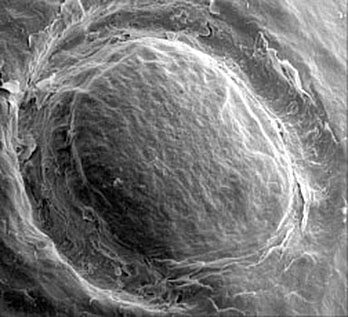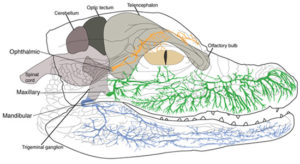 |
| Alligators and crocodiles have faces covered with thousands of domed sensory organs (black dots on jaws) that are used to detect water movements and to guide their predatory strikes when they contact prey with their jaws. We have recently shown that these organs impart an alligator’s armored skin with a sensitivity greater than human fingertips. |
 |
A single “integumentary sensory organ”, or ISO, under the scanning electron microscope. The distribution and response properties of these mechanoreceptors suggest they play diverse roles and are particularly important for discriminating objects held in the alligator’s jaws. One intriguing question is why alligators only have ISO’s on their faces, whereas they cover the entire body in crocodiles. |
| The ISO’s are supplied by a very dense network of nerve fibers shown on the left. The large maxillary and mandibular nerves of the trigeminal system branch extensively and emerge from the bone to supply the skin of the upper and lower jaws. |  |
